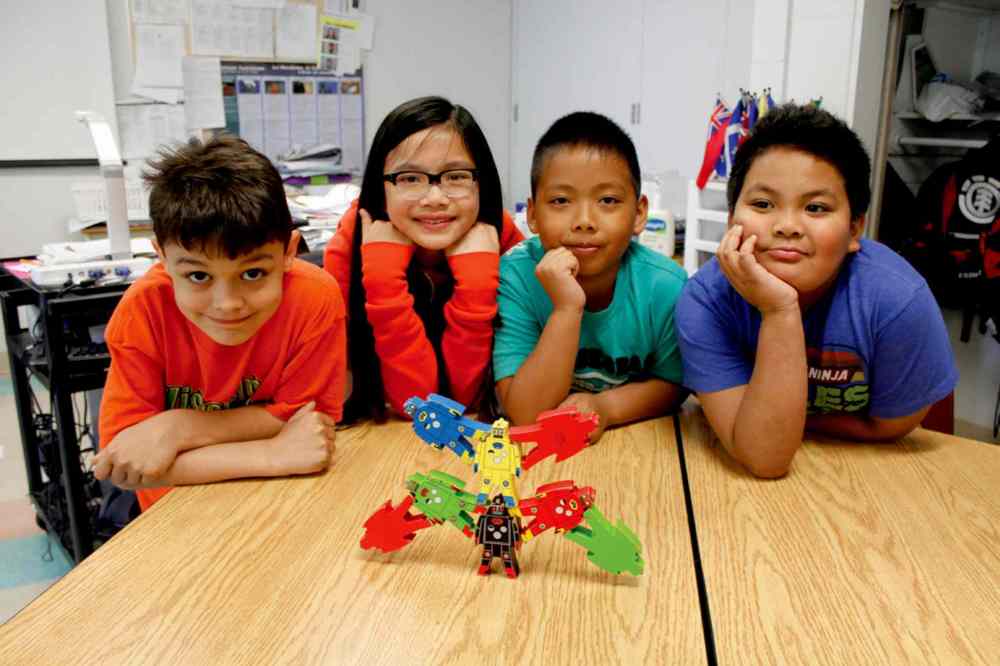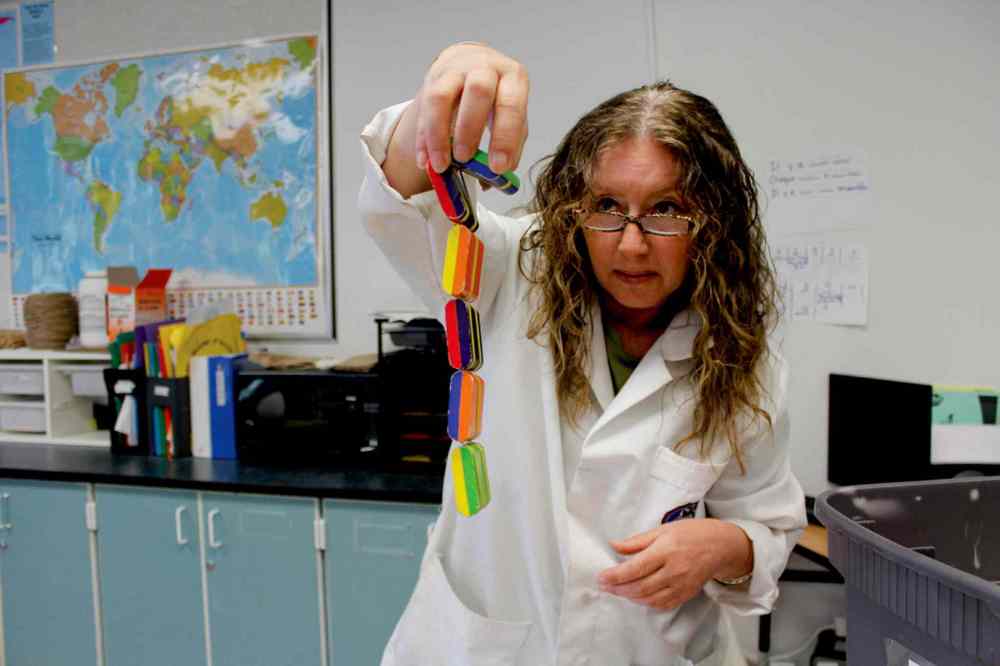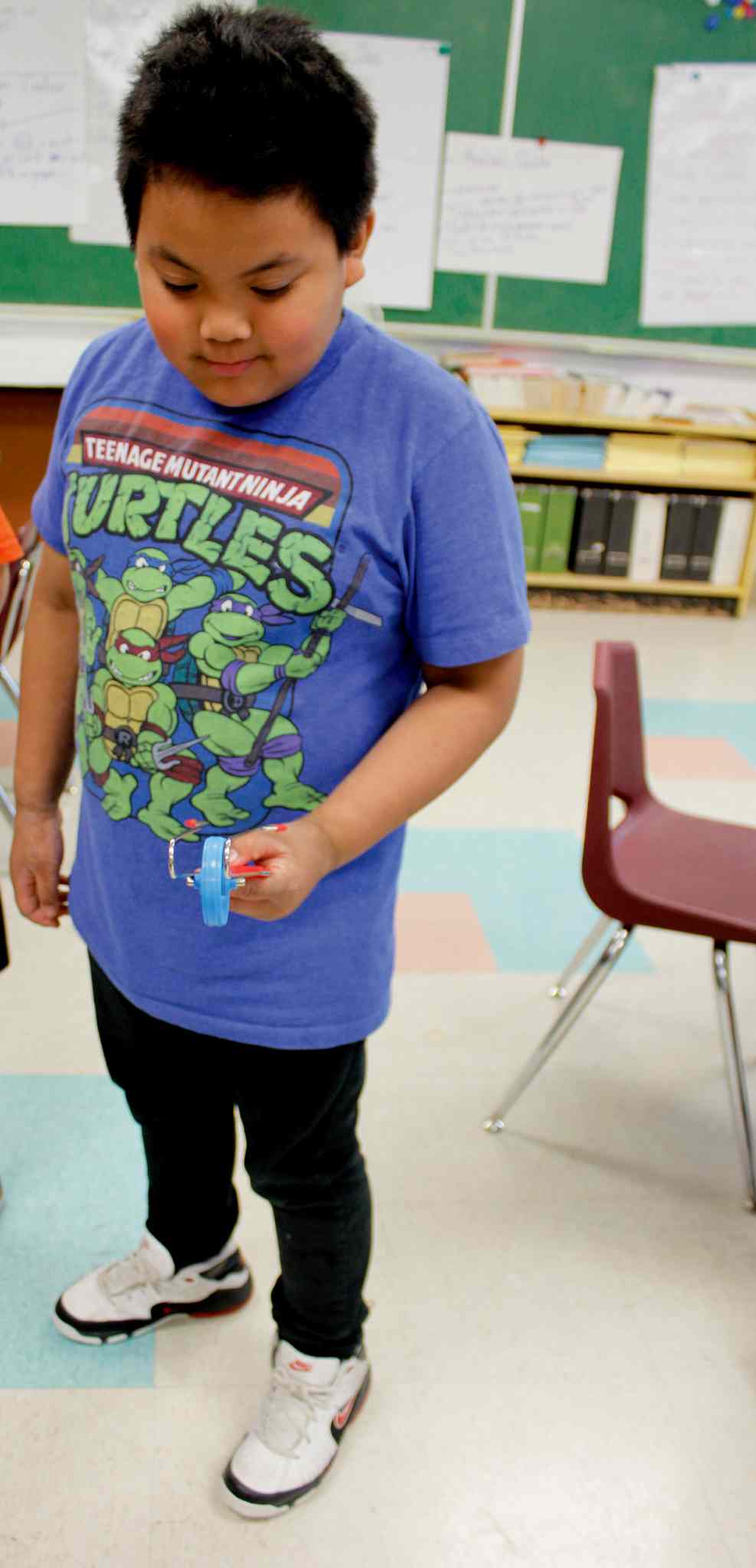Students mad about science
Organization aims to get kids excited about science
Advertisement
Hey there, time traveller!
This article was published 05/06/2014 (4186 days ago), so information in it may no longer be current.
Wild hair and lab coats are not necessary to take part in Mad Science.
Grade 4 students at École Sacré-Coeur (809 Furby St.) wrapped up their last Mad Science session Wed., June 4 during lunch with a lesson on the science of toys.
Bonny Palanuk, also known as Dr. Bubs, stood at the front of a classroom of 13 kids, with various toys and taught them about the toys’ different types of energies, gravity, and friction. Palanuk either left the toy alone, held the toy, or made the toy move, and the students eagerly shouted out if it was static, potential, or kinetic energy.

Gabriel Markiw, also known as Dr. Pepper, explained that Mad Science of Manitoba (1475 Wellington Ave.) is an organization that brings hands-on science education to young children.
“The mission of Mad Science is basically to get kids excited about science at an early age,” Markiw said. “What we do is we try to find a way to make science very hands-on. That’s why the kids love doing Mad Science.”
Mad Science consists of six different systems, which are groupings of eight different topics. In schools, Mad Science is either a six- or eight-week program — one hour per week — that will learn about one of the six systems, and each topic within a system will be taught throughout the six to eight weeks.
“A lot of that has to do with logistics. Mad Science is very popular, so we have to rotate the kids,” Markiw said. “We have six different systems so a child can take Mad Science every year from Grade 1 to Grade 6 and never repeat the same lessons. It’ll always be new subjects.”
At École Sacré-Coeur, Grade 4 students learned about the weather, movie effects, detective science, machines, kitchen chemistry, bugs, and toys over the course of six weeks, starting in late April.

Students also learned how machines work, how to catch bugs, how to do different experiments with food. Palanuk wrapped up the system with the science of toys.
“What we do is we take a look at how toys, even just basic toys, how they work from a scientific perspective,” Palanuk said. “The whole idea is for them to use each of the toys and try to determine what kind of energy and what kind of forces are being used on each of them.”
During the last session, kids broke out into small groups to test out each of the toys, carrying out the scientific method.
“They’re doing all the experiments in group work. They’re not reading a book about theory. The actual way we teach Mad Science is trying to use the classic form of science inquiry.” Markiw said.
Facebook.com/TheMetroWPG
Twitter: @metroWPG





